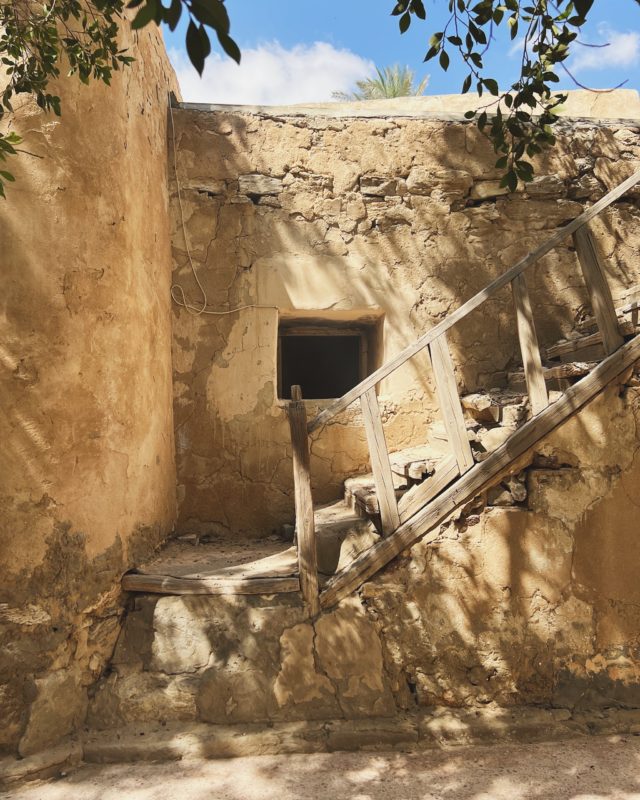
It’s strange to think that a morning in the desert learning about the Desert Fathers (including one of my church history heroes, Athanasius, who spent formative time away in monastic communities), visiting the 4th-century Monastery of Saint Macarius the Great, having a modern-day Monk sing a beautiful trinitarian hymn to us acapella, seeing what are claimed to be the relics of Elisha and John the Baptist from the Bible, observing Mohammed Salah billboards up and down the desert highways, and enjoying the centring peace and calming quiet of the desert… was NOT the highlight of our Wednesday.
It’s only our second full day, and I’m reasonably sure all seven members of our Open Doors team are falling in love with Bishoi. What a man of contagious joy and with a super-power for telling remarkable stories. One of the things that Bishoi has encouraged us to do is to experience Egypt. The invitation was that we would not just see the beauty of an ancient building still standing, but we would see the hands of the skilled men and women who built it so that we would understand their circumstances and know their stories.
The day’s highlight was the opportunity to experience two stories from 2015 and 2016. These were two stories that moved me when I first heard about them and stories I have shared previously in conversations and sermons.
The contrast from the contemplative morning in the desert to the afternoon back in the hustle and bustle of downtown Cairo couldn’t be starker.
We arrived through heavy security at El-Botroseya Church with the scorching mid-afternoon heat on our backs and the constant honking of horns around the perimeter of the church compound.
I didn’t realise just how close we were about to get to these familiar stories.
In a matter of seconds, we were retracing the steps of a suicide bomber.
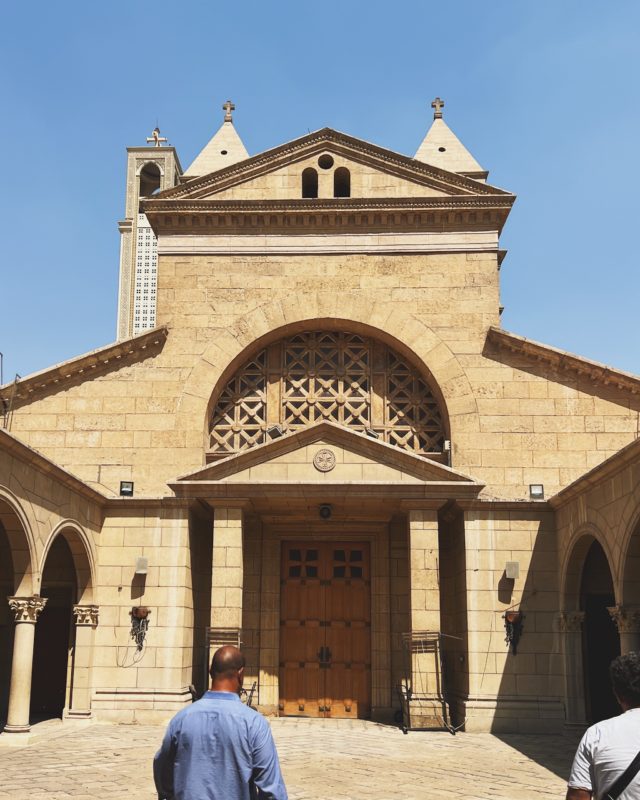
Step 1: The Entry
Immediately, we were shown exactly where the suicide bomber had walked in off the street at 10am on Sunday, 11 December 2016.
Step 2: The Wrong Door
Those familiar with Coptic church culture would know that the men sit on the left and the women sit on the right of the church. This newcomer to church started walking towards the door on the right.
Step 3: The Intervention
One man, Nabil, noticed and instantly ran after him wrapping his arms around the terrorist just after he’d entered the women’s door. At that moment, the bomb was detonated.
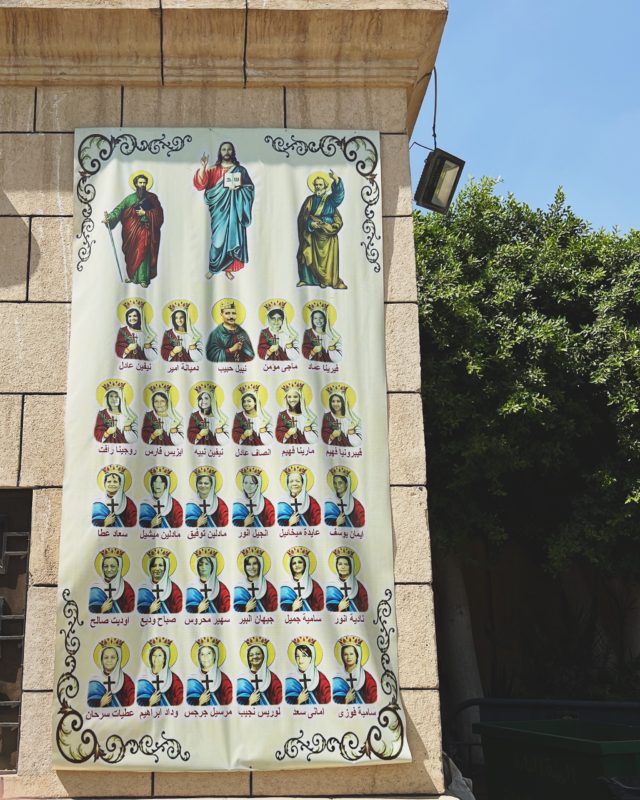
Step 4: The Impact
As a result of the explosion, 28 women and girls were killed as well as Nabil – it would have been many more, but for the heroic intervention of this observant brother in Christ.
Step 5: The Blood
Outside the church, they have put glass over some of the blood still splattered on the walls 40 metres away from ground zero to remember those whose blood was shed.

Step 6: The Shrapnel
The shrapnel marks that remain on the internal pillars of the church made an indelible impression on me too.
Step 7: The Black Tile
We stood on a black tile placed on the ground as part of the post-bombing refurbishment. This was where the suicide bomber ended the lives of these ordinary followers of Jesus gathering for Sunday worship. We stood in that place and remembered these martyrs.
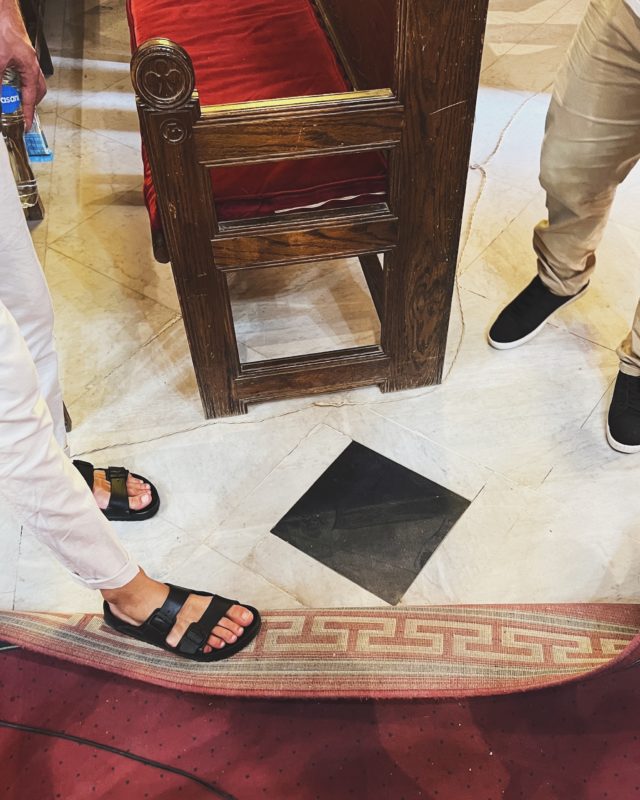
Step 8: The Twin
On the day of our visit, just two metres from the black tile, we had the privilege of meeting Ashraf. He is the twin brother of Nabil.
Step 9: The Peace of God
Listen to these words from Ashraf reflecting on that dreadful day,
“The sight of the blood and the bodies in the aftermath of the explosion was unbearable. But knowing that Nabil is now crowned in heaven gives me strength. God has supernaturally filled me with condolence, comfort, and peace.”
Step 10: The Resolve
We asked Ashraf,
“Are people still worried and fearful of coming to church?”
His response was,
“Every day we have a liturgy, and every day the church is full.”
In Brisbane, if there’s a bit of rain on Sunday, many churchgoers avoid gathering that day. And yet, look at the lessons from our persecuted brothers and sisters: rather than shrinking back in fear, persecution brings greater resolve. These Christ followers don’t give up meeting together – but adversity draws their community together.
“I want you to know, brothers and sisters, that what has happened to me has really served to advance the gospel, so that it has become known throughout the whole imperial guard and to all the rest that my imprisonment is for Christ. And most of the brothers and sisters, having become confident in the Lord by my imprisonment, are much more bold to speak the word without fear. (Philippians 1:12–14 ESV)
El-Botroseya Church believers continue to speak the word of God without fear.
Step 11: The Irrigation
On the desert highway this morning, echoing the words of second-century church father Tertullian, Bishoi said,
“The blood of the martyrs is the irrigation of the church.”
As persecution increases, the Egyptian church continues to meet, disciple, evangelise, and grow – and blood fuels that growth.
Come back tomorrow for the second story we will experience while in Downtown Cairo.
—
Read the rest of the series here.
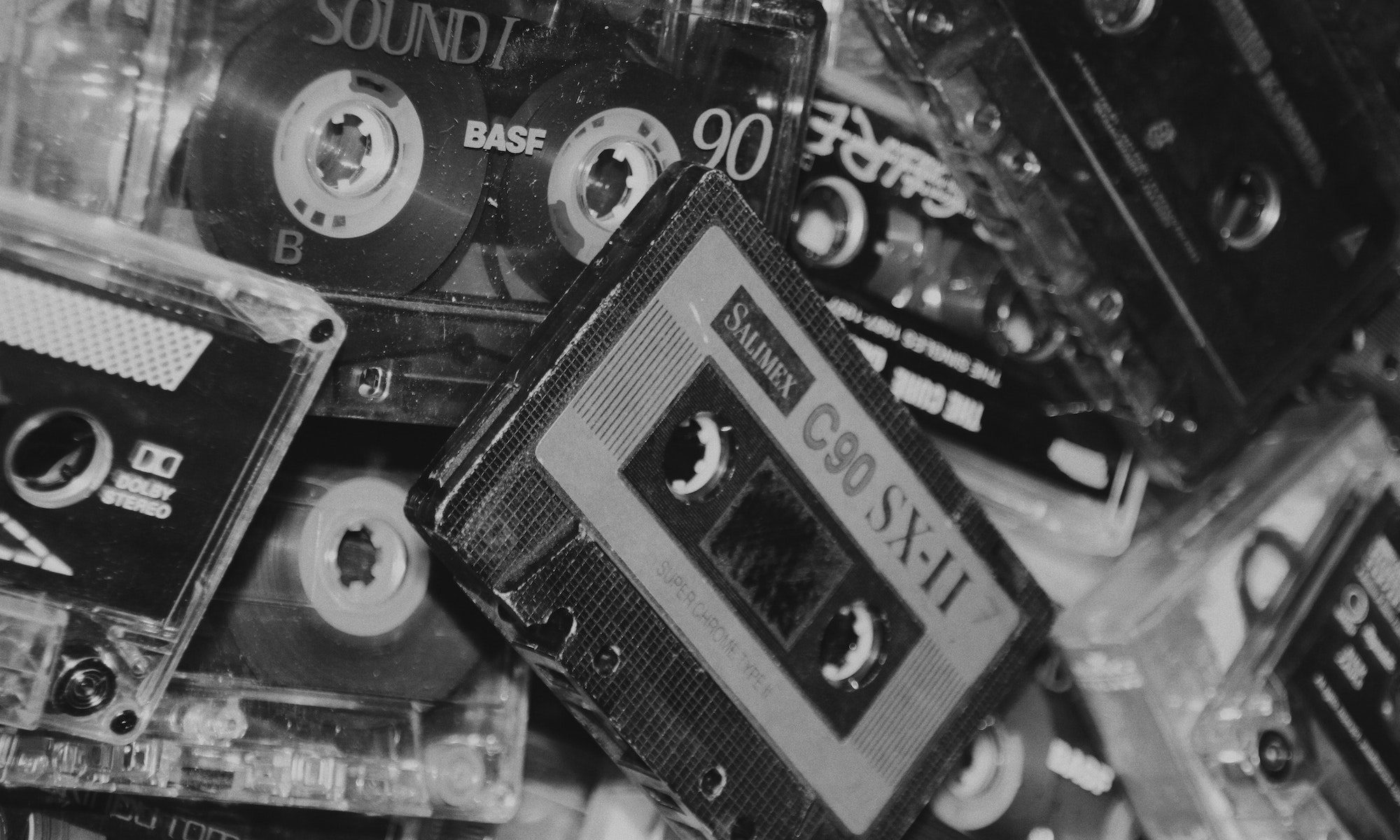
2 Replies to “// IN THE STEPS OF A SUICIDE BOMBER // Egypt Travel Blog 05”
Comments are closed.